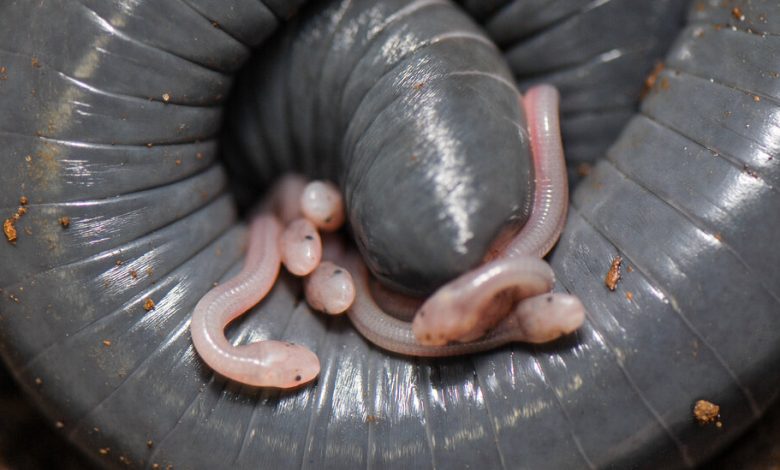You’ll Never Believe Which Animal Makes Milk for Its Babies

Motherhood takes many shapes. Most vertebrates, like birds, reptiles, amphibians and fish, reproduce by laying eggs filled with nourishing yolk that their offspring use as an initial source of nutrition before hatching. Mammals change the game by giving birth to live young and feeding them fatty, sugary milk as they get on their feet.
But nature breaks rules all the time, and the latest animals to confound the yolk vs. milk binary are caecilians, the egg-laying, legless amphibians that look like worms. Research published Thursday in the journal Science suggests they feed their hatchlings a milk-like substance too, but from their behinds. This behavior is unknown in amphibians.
It adds to the curiousness of caecilians, who were already known for feeding hatchlings skin ripped off mom’s back as a postnatal nutritious snack.
“It’s like they’re from another planet,” said Carlos Jared, a caecilian researcher at the Butantan Institute in São Paulo, Brazil, and an author of the study. “For me, they’re like Martians.”
Caecilians are “one of the least understood” vertebrates, Dr. Jared said. Because they spend most of their lives underground, they are difficult to find and even harder to study.
Since 1987, his team has been musing about caecilians making milk. After several trips to the cacao plantations in the Atlantic Forest of Brazil, his team managed to collect 16 mothers of the Siphonops annulatus species of caecilians, and their numerous hatchlings. Each mother has four to 13 babies. Back in the lab, they filmed each family during the two months from hatching until the wormy amphibians became independent.
